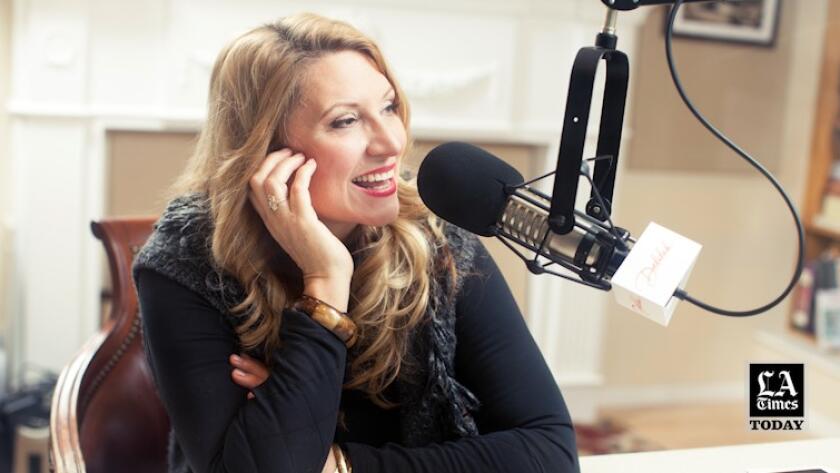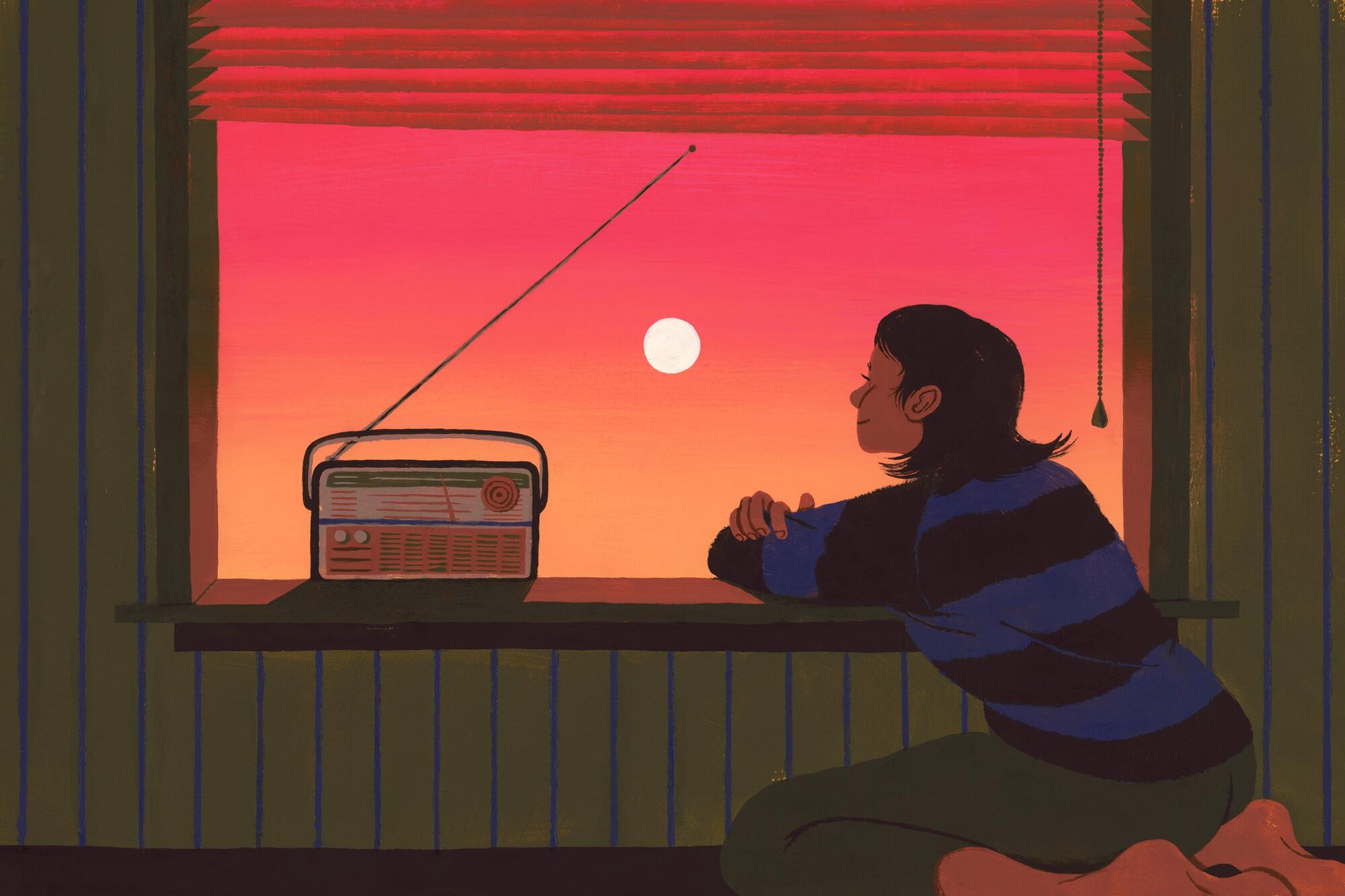
- Share via
A few weeks after moving to Los Angeles last August, my partner and I were driving home from the movies when we came across the voice of Art Laboe on the radio, chatting with KDAY 93.5 FM callers late on a Sunday night.
For the record:
10:39 a.m. Feb. 17, 2023An earlier edition of this story stated that Art Laboe started his radio career at KSAN 107.FM. The station was KSAN 1450 AM. The story also said Dick Hugg — better known by listeners as “Huggy Boy” — began hosting a call-in show on Glendale’s KRLA-AM 1110 in 1983. At the time, KRLA was licensed in Pasadena.
“Why have you never dedicated a song to me?” I asked them as we rolled up to a stop sign.
“Because it’s corny,” they replied. “But I’ll do it if you really want.”
The streets were quiet when we turned onto my block a few minutes later. We lingered in the car for a minute to hear a stranger pour her heart out to Laboe — and thousands of listeners.
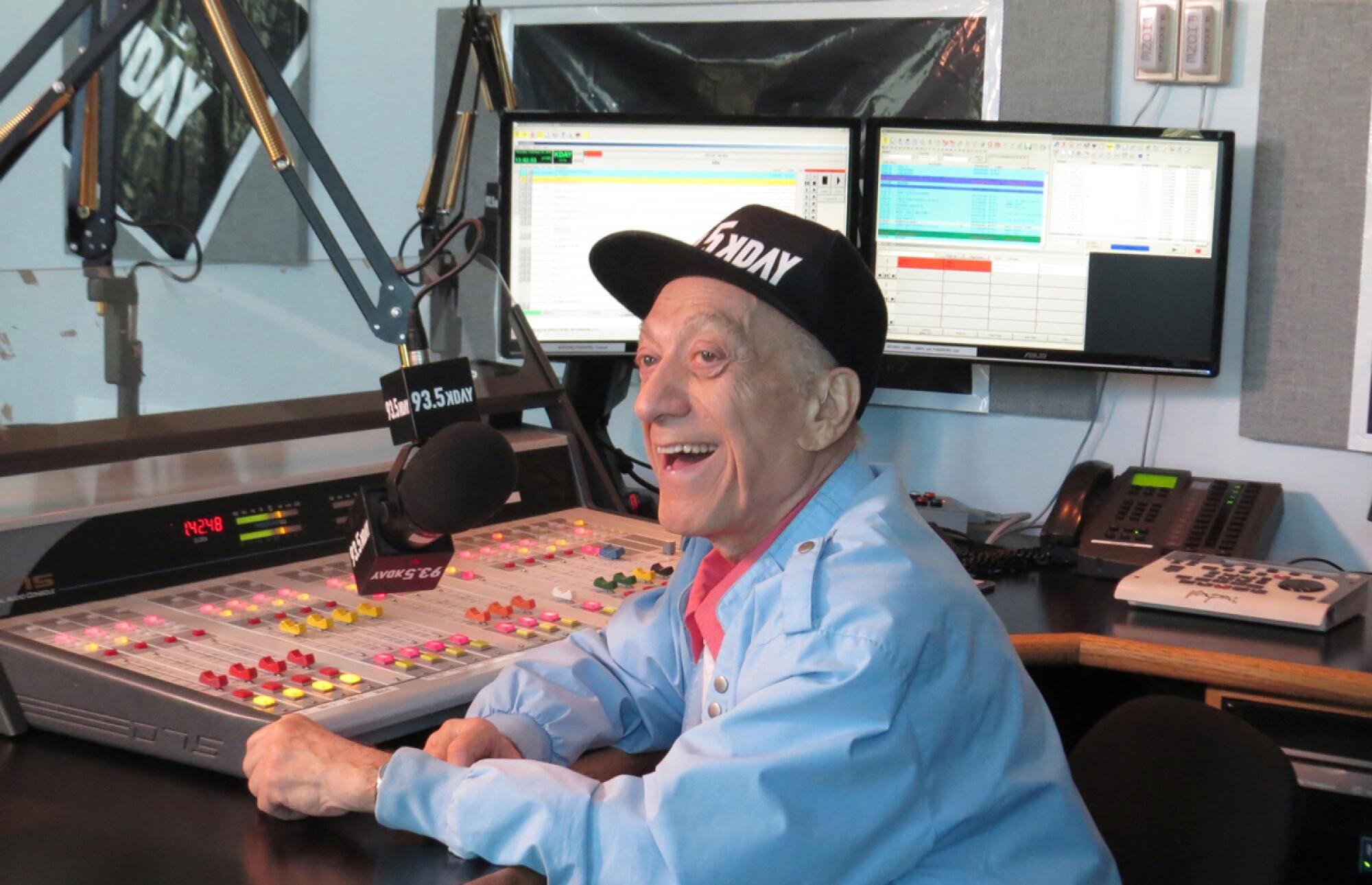
Laboe died last October, but his impact on the radio industry can be heard in the dozens of dedication shows that cropped up after he first went on air in the 1940s. The trend peaked in the 1980s, when quite a few popular shows started broadcasting, but dedications can still be heard across the country every night.
Delilah, the mononymous “queen of sappy love songs,” broadcasts a five-hour-long request show each night from her home near Seattle that has made her the most listened-to woman on the radio. She is nationally syndicated on about 150 stations, reaching about 8.3 million listeners each week.
On L.A.’s KOST 103.5 FM, Karen Sharp reaches nearly half a million listeners weekly.
Calling into a radio station might seem like a relic from another era — a cinematic-yet-clichéd gesture, like holding up a boombox beneath a bedroom window or racing through an airport to stop the love of your life from getting on a flight (or a radio DJ relaying an apology from Ross to Rachel in “Friends”).
But the shows have a hold on listeners. Even in the age of cellphones and Spotify, legions of fans still tune in nightly.
Finding them is easy: The host might be wishing a couple a happy anniversary or issuing a diplomatic apology on behalf of someone in the dog house. They’ll play songs like Selena’s “Dreaming of You” for long-distance couples, “Kiss Me” by Sixpence None the Richer for hopeful crushes and Dolly Parton’s rendition of “I Will Always Love You” for those wallowing in heartbreak.
Nina Morales from Sylmar spent seven years dedicating songs to her husband, Scrappy, while he was incarcerated in Delano, Calif. Though she’d been listening to Laboe’s show since she was 9, Nina didn’t call in until years later, when she dedicated Bertha Tillman’s “Oh My Angel” to her spouse.
“The love that we had for each other,” she said, “he would hear it in my voice every time I called.”
She continued calling Laboe’s show to dedicate songs to Scrappy five nights a week until his death in late 2021.
“My husband was my best friend, my soulmate, the love of my life,” Morales said. “And Mr. Art Laboe would bring us closer, no matter the distance or time.”
Plenty of disc jockeys have come up with analogous call-in show formats over the last 80 years, but Laboe was likely the first to take listener requests and dedications. He started in 1943, when he got the chance to fill an hour of airtime between 11 p.m. and midnight on San Francisco’s KSAN 1450 AM FM, sharing the station’s phone number to attract listeners and song requests.
“There was no technology back then to put the caller on the air,” said Joanna Morones, Laboe’s longtime producer and friend. “So he would take calls, talk to them, find out what they wanted to talk about, and then he would have to repeat it over the air.” By the time Laboe moved to Palm Springs to broadcast on KCMJ-AM 1140 in 1946, he was using a speaker telephone that sat under the mic so listeners could speak and be heard.
“When you call up and dedicate a song, you’re letting the world know you love somebody,” Laboe told journalist Ryan Bradley in a 2015 interview. “All of a sudden, the telephone in their hand, going all over their city and state and even the world, they realize, ‘I’m not just somebody who makes hamburgers or works at the car wash.’ It’s a powerful feeling.”
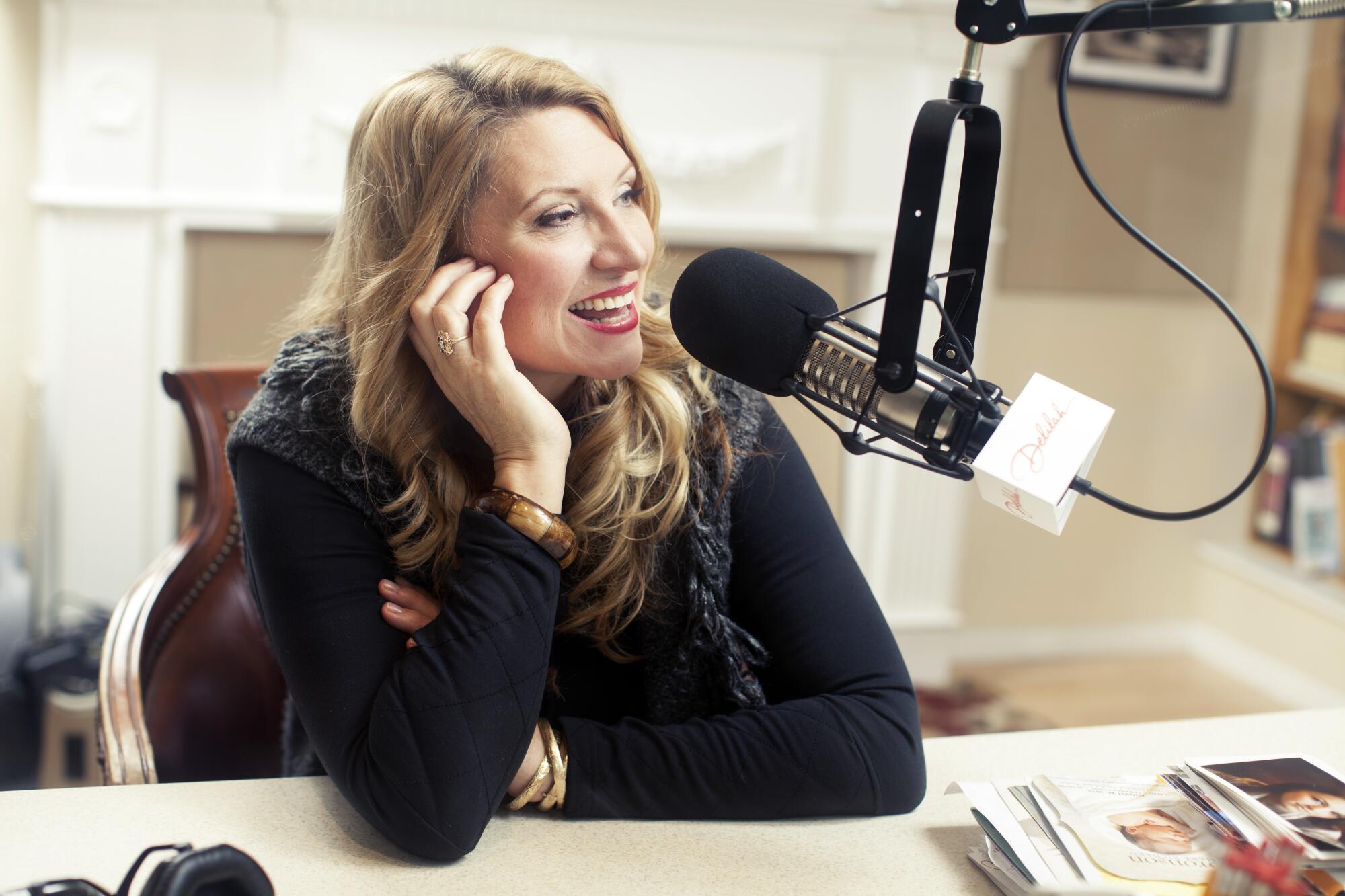
Over the years, other DJs had similar instincts. Delilah said that she began airing listener stories and requests in the 1980s, shortly after she started her first full-time radio job at Seattle’s KZAM 92.5 FM. “‘People are calling me and saying such amazing things,’” she told her program director. “‘Could I just record it and play some of this stuff on the air?’”
Dick Hugg — better known by listeners as “Huggy Boy” — began hosting a call-in show on Pasadena’s KRLA-AM 1110 in 1983, with help from Laboe. By 1985, Laurie Sanders was broadcasting “Love Songs on the Coast” on L.A.’s KOST 103.5 FM — the popular show that’s now helmed by Sharp.
“The dedication was part of top 40 radio,” said Michael Harrison, publisher of Talkers Magazine, a trade industry publication. “It was just the way it was. And what it did was it created a connection between listeners and the radio station.”
“People are lonely,” Delilah said. “I think people are more lonely today than I ever heard in my career.” And even though many calls are about love and heartbreak, they all touch on something much bigger. A representative said Delilah gets upward of 50,000 callers each night, though she can only talk to about 75 of them.
“People want to feel like they’re a member of a community,” said Sharp, who gets about 100 callers each night and is able to speak with about a third of them. “They’re looking to be heard.”
Laboe’s community flourished in Southern California from the start.
“The easy take is just that people are in their cars a lot,” Bradley said. Thanks to our famously bad traffic, “you’re alone with yourself a lot more here than in other cities.” Hearing familiar and loving voices on the radio can fill some of that empty space.
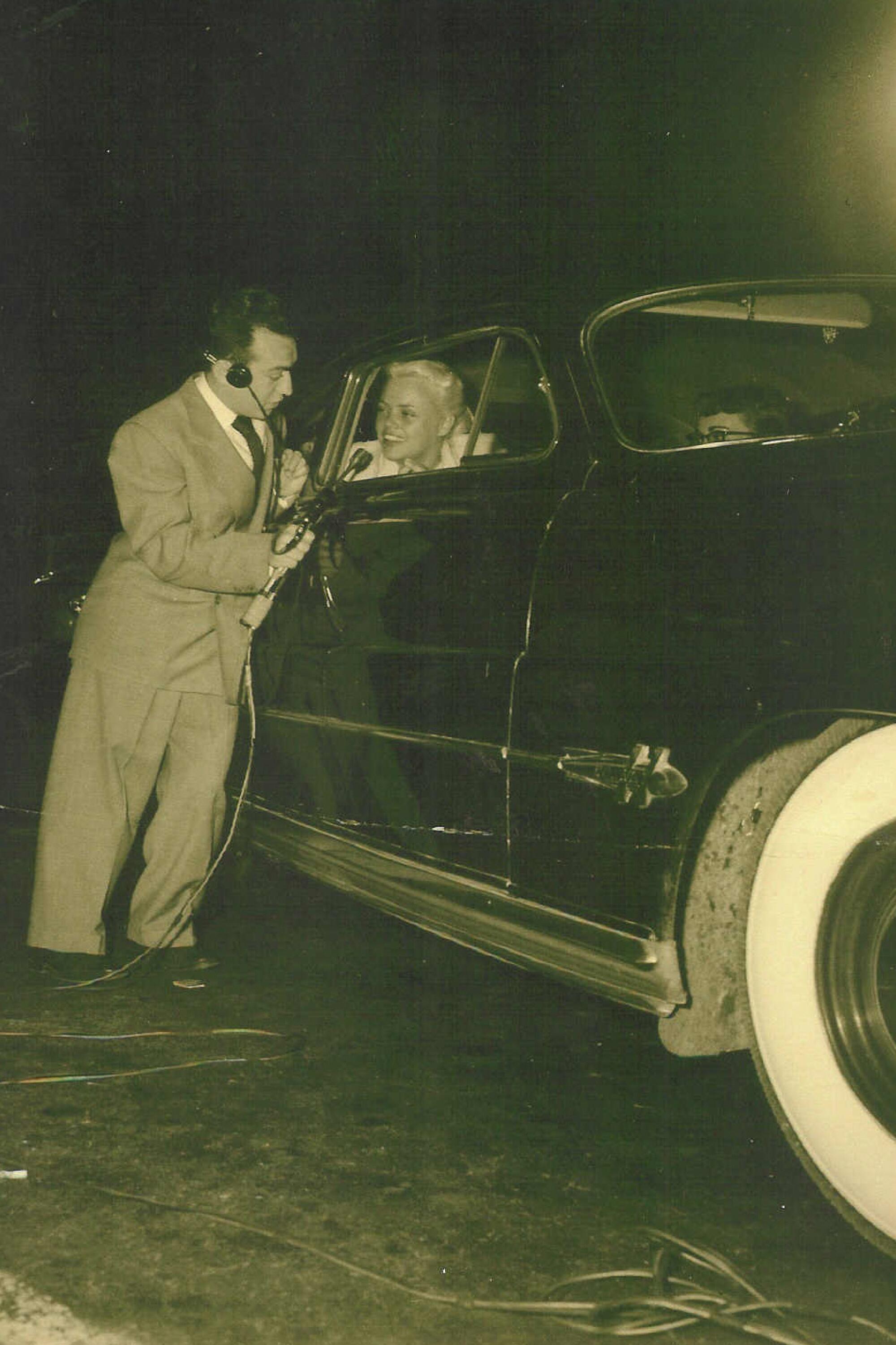
But Laboe’s request shows were about more than entertainment. Early on, he was airing calls from Black and Mexican listeners, breaking racial barriers. “He is more Chicano than some Chicanos,” comedian Paul Rodriguez told The Times in 2009. “And everyone from the toughest vato to the wimpiest guy would say the same.”
Laboe moved to Los Angeles in 1949 to work, at KRKD, and as he was searching for advertisers, he found himself talking to Paul Scrivner, who owned a chain of popular drive-ins. They quickly realized he could broadcast a live radio show from the Scrivner’s Drive-In on the corner of Cahuenga Boulevard and Ivar Avenue near Sunset Boulevard. Laboe soon left the station to broadcast his live show on KXLA (which rebranded as KRLA years later).
As his popularity soared, Laboe wanted to find ways to meet his younger audiences on a larger scale. In 1955, he found a promoter and started to throw dances at the El Monte Legion Stadium, a run-down auditorium that hosted Olympians in 1932. Nearly 3,000 teenagers of all races and ethnicities had the chance to dance and catch live performances every other Saturday.
By the 1980s, when other dedication shows began cropping up on local stations, Laboe had become a part-owner of KRLA and had a star on the Hollywood Walk of Fame. In 1991, he started a show called “The Art Laboe Sunday Special,” taking it with him as he hopped from station to station. Eventually it was rebranded as “The Art Laboe Connection,” which he hosted until his death in 2022. (His shows still broadcast Sunday nights on 93.5 KDAY, and Monday through Thursday night on Old School 104.7 KQIE.)
“Through the years and the decades, he’s made millions of dedications and had millions of listeners,” Morones said.
Many of these dedications were to or from incarcerated people. In his studio, Laboe hung photos from his listeners and thick stacks of letters from families of the incarcerated who were communicating through his show.
“To see that all over the walls, it wasn’t an artifice,” said Mark McNeill, the founder of L.A.’s nonprofit internet radio station dublab. “He wouldn’t have had that stuff up as an inspiration if it didn’t mean something to him.”
A few years ago, dublab created a project called Dedicated to Art Laboe that allowed listeners to call in and turn the tables on their favorite host.
Cynthia Solis from Pomona started calling Laboe to dedicate songs to her husband, Anthony, after he was incarcerated in 1996. “He would hear my voice saying it, and that’s what made it real special,” Solis said. “Everyone in that whole place got to hear it.”
Sometimes she still calls in to dedicate a song for him, even though she knows he won’t be able to hear it. Anthony is now at a facility in an area that isn’t reached by the show, which means he won’t be able to hear her dedicate another song until he’s released in the next few years.
“He told me that he couldn’t deal with it in there without those dedications,” Solis said. “Because they made him feel like somebody loved him.”
Sharp started filling in for Laurie Sanders on “Love Songs on the Coast” in 1987. She soon took over the show and started to attract her own fan base.
Charles McClister has called Sharp many times over the years to dedicate Rod Stewart’s “Have I Told You Lately That I Love You” to his high school sweetheart, Angelina. Their daughter, Daniella Badeau, said that hearing the song on Sharp’s show would always make her mother, who died in January 2021, cry.

“They were together for 46 years and something in that song played a part in their love story,” Badeau said. “My dad probably felt like he knew Karen Sharp like she was his best friend,” she added. “He would call in for their anniversary; he would call in for everything.”
In that moment, “whatever the two of them felt when they heard that song, it was like time stopped,” she said.
Sharp likes to tell the story of meeting Gwen Stefani several years ago at a KOST Christmas show, where the singer said that “Love Songs on the Coast” had a big impact on her.
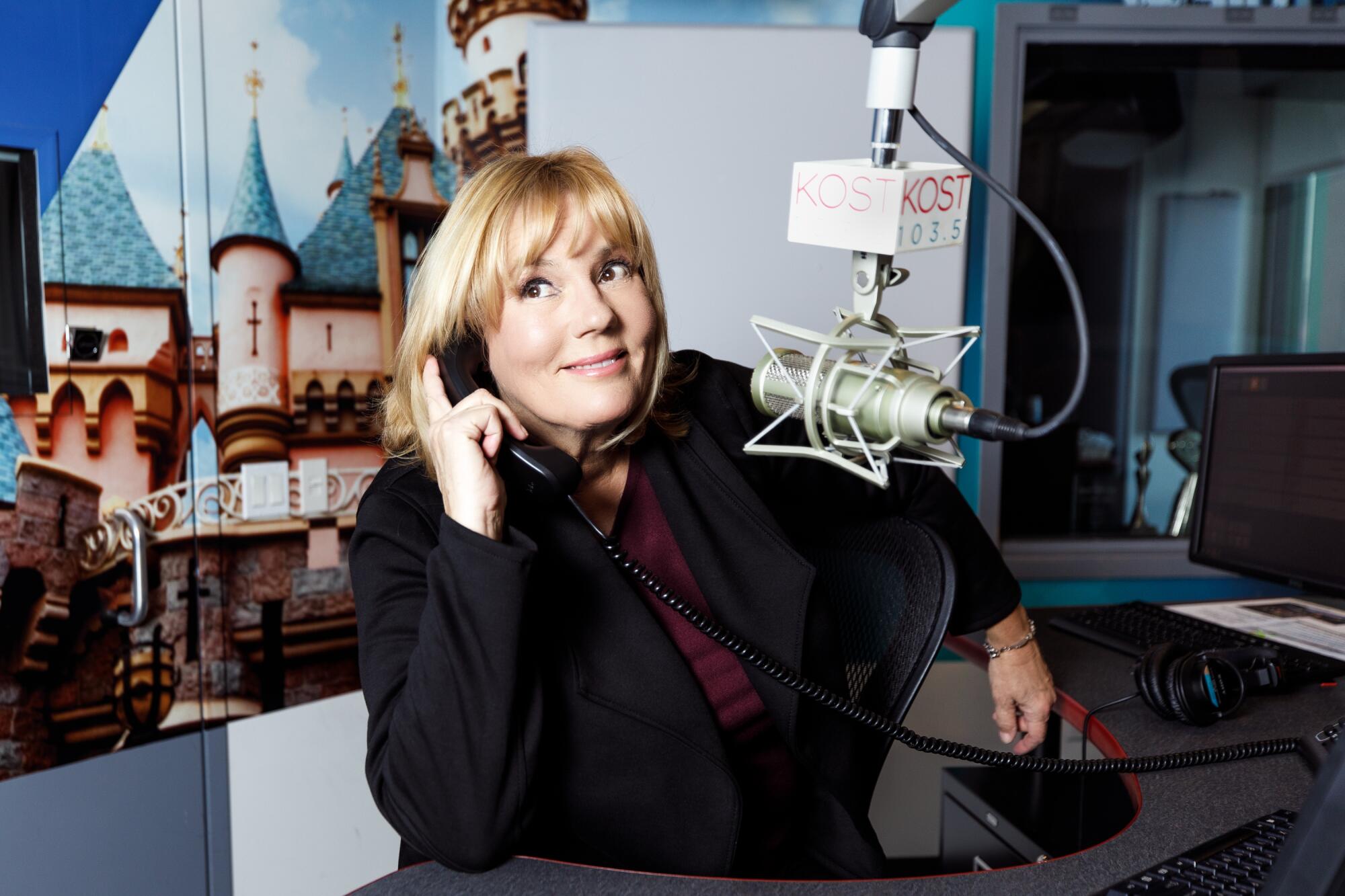
“Gwen shared that she could relate to the callers in dealing with some of the same relationship issues she was facing, and it was calming to her to listen to the show,” Sharp said. “She went on to say that she wrote ‘Just a Girl’ while listening to ‘Love Songs On The Coast.’”
But on occasion, the call-in experience can be painful.
Stefan Bain was a teenager living in Orange County in the mid-1980s when he tried to dedicate a song to a crush named Dave. “I was coming out and was just falling in love with a co-worker,” Bain said. “I thought nothing about calling in to dedicate a song.”
When he called in to a local station to request “That’s What Friends Are For,” the woman who answered said that song was also her favorite. “‘I have a friend that I’m kind of falling in love with,’” he recalled telling her. “Then I said the word ‘he.’”
The screener stopped him and said, “Wait a minute. I wish you would have told me this was a gay call.” She told Bain that he could mention a “girl’s name” on the broadcast and then call Dave to explain the pseudonym. But before Bain could even respond, she hung up.
Bain now lives in Nashville, and as he recounted this attempted dedication, he said he felt some of the same sadness and anger that he endured when it first happened. “For a moment, I thought, ‘This would be just as hard to get on the radio today, here in the South, as it was in Orange County back in the ‘80s,’” he said. “I felt like nothing had changed.”
Although dedication shows kept cropping up for several decades, industry-wide regulations and trends eventually started to work against the format.
“We’re [now] deep into the era of automated music radio, which is the ultimate result of radio management saying, ‘Shut up and play the records, stop talking so much,’” Harrison said.
McNeill said that the Telecommunications Act of 1996, which led to more consolidation in the industry, had a big impact. “It depersonalized and dehumanized radio because suddenly you had one programmer programming multiple stations across the country,” McNeill said. “The magic of the personalities of FM radio really started to get ironed over and flattened out.”
But that’s part of what still makes hosts like Delilah, Sharp and Laboe stand out.
“Coming across Art, it didn’t feel like it was a gimmick to sell you something,” McNeill said. “It was really an investment in these stories, and these messages, and the sort of sonic love letters that the listeners were sending.”
Nowadays, you don’t need to call radio stations to request songs anymore, but it’s far more memorable to do something out of the ordinary.
The other night, my partner’s voice finally came through my car’s radio.
“Hi, I’m Reanna in Los Angeles. This is for my partner, Julia,” they said, “and I want to dedicate Lauryn Hill’s ‘Can’t Take My Eyes Off Of You,’ because I just want you to feel special, and I love you.”
It’s a declaration that we’ve repeated to one another thousands of times, but in those 30 seconds, it found a new way to make my heart flutter.
- Share via
Watch L.A. Times Today at 7 p.m. on Spectrum News 1 on Channel 1 or live stream on the Spectrum News App. Palos Verdes Peninsula and Orange County viewers can watch on Cox Systems on channel 99.
More to Read
Sign up for The Wild
We’ll help you find the best places to hike, bike and run, as well as the perfect silent spots for meditation and yoga.
You may occasionally receive promotional content from the Los Angeles Times.
